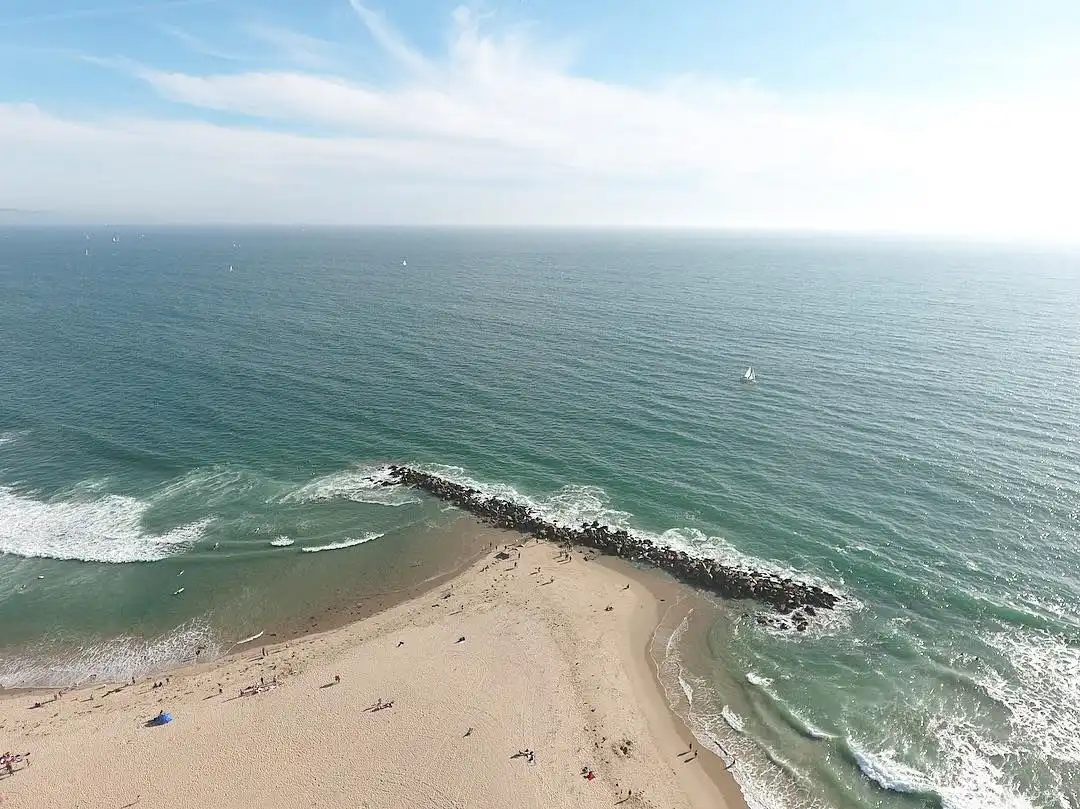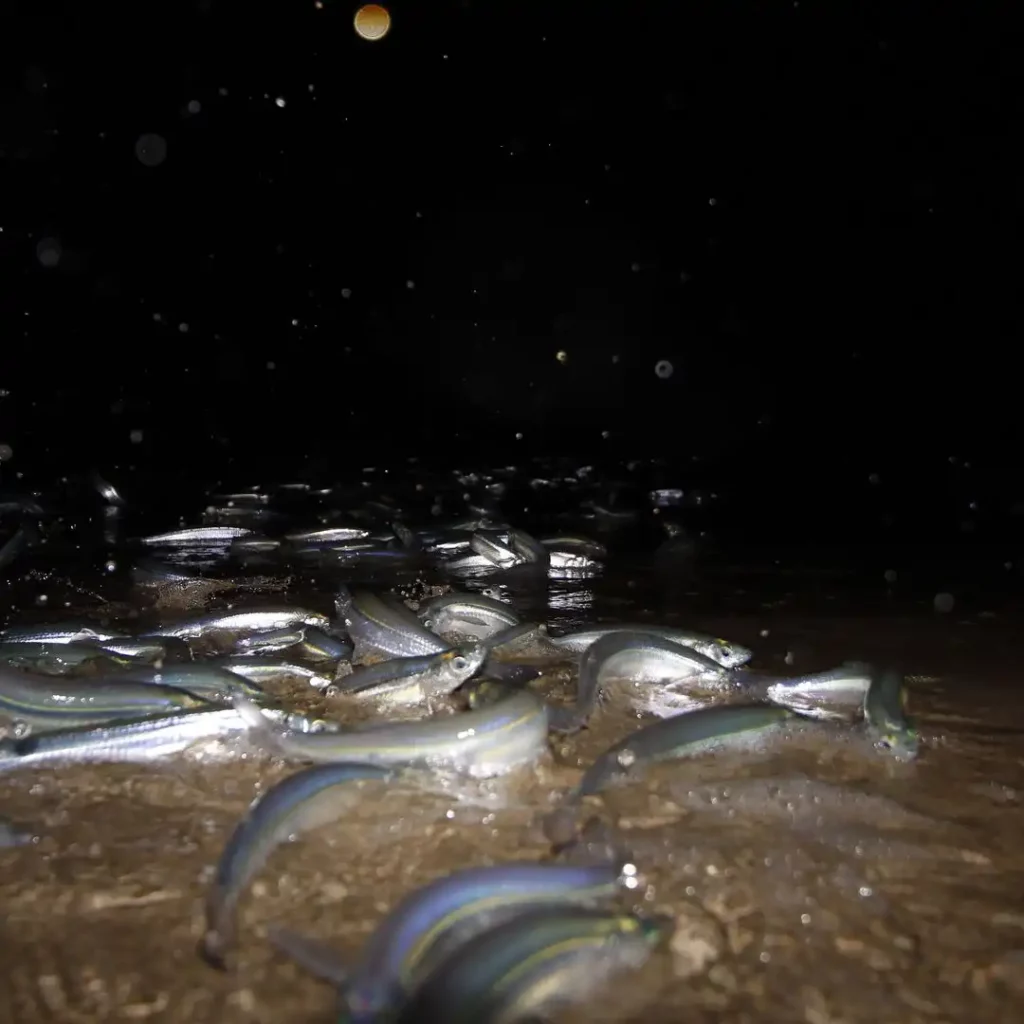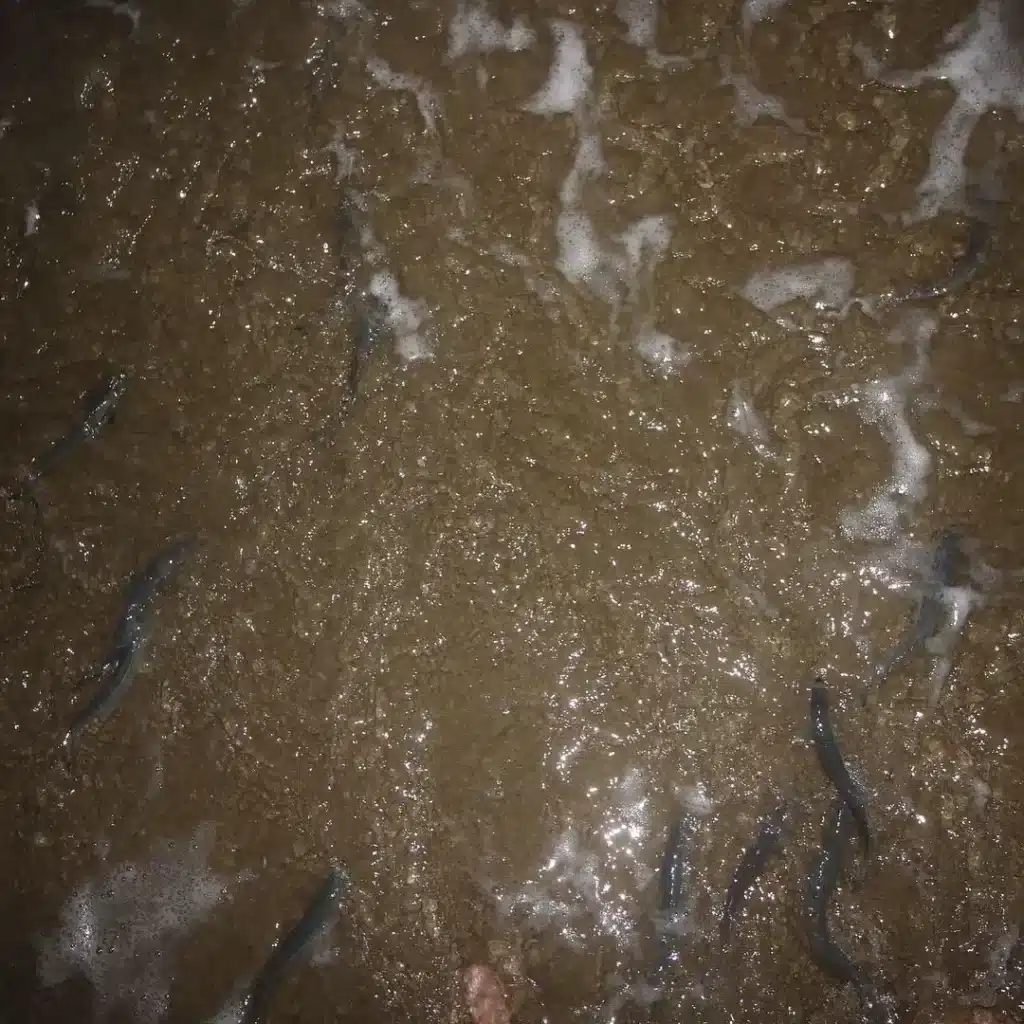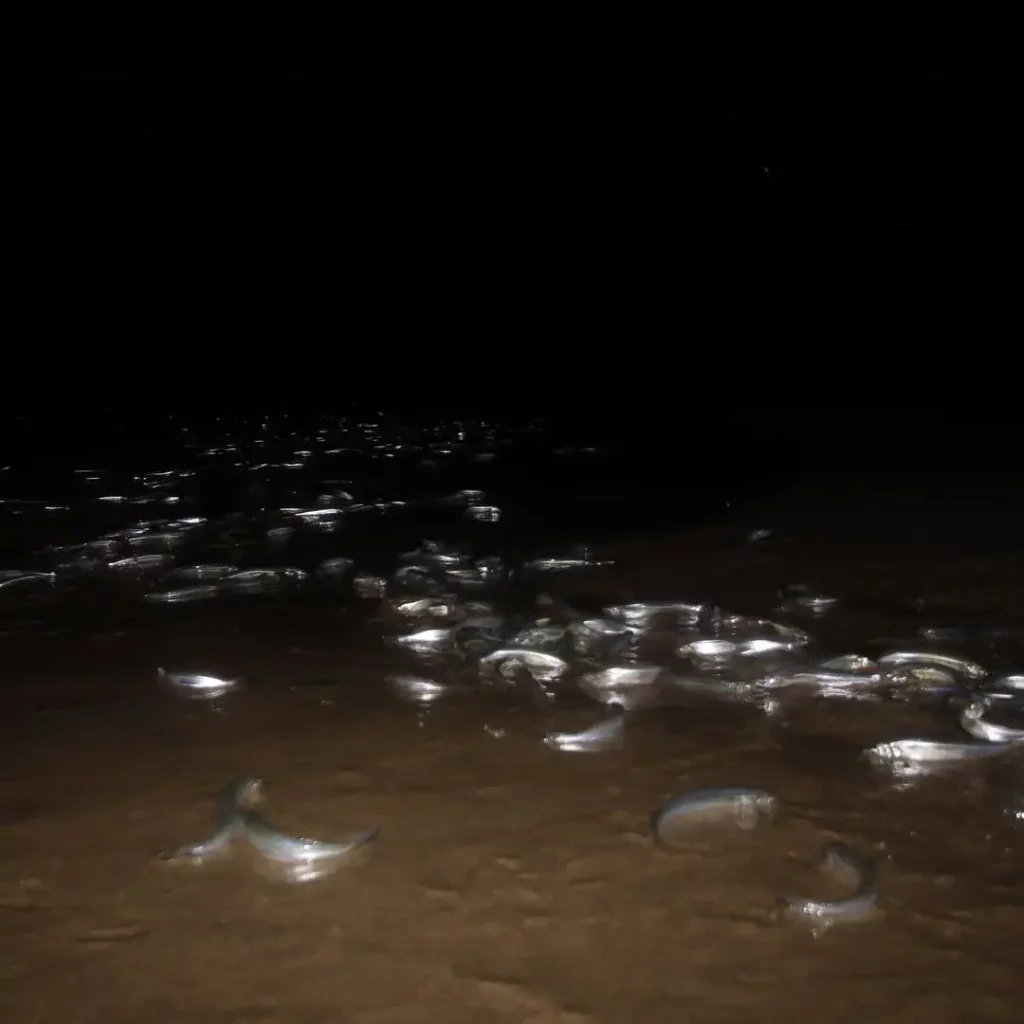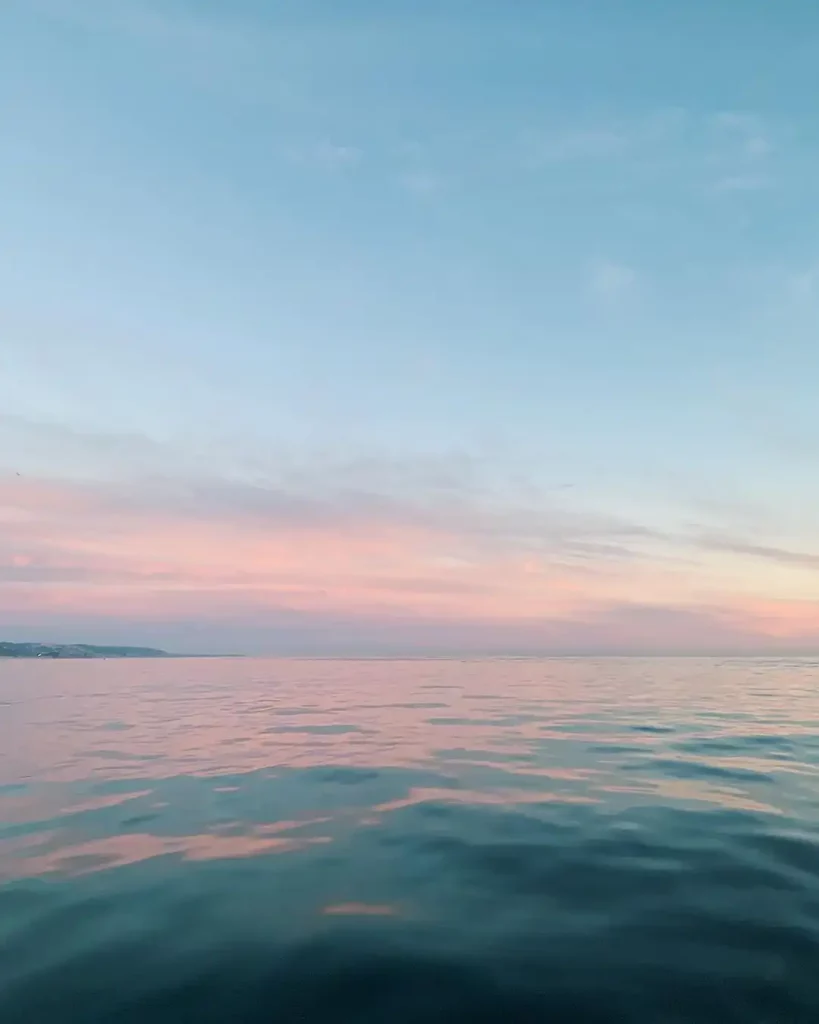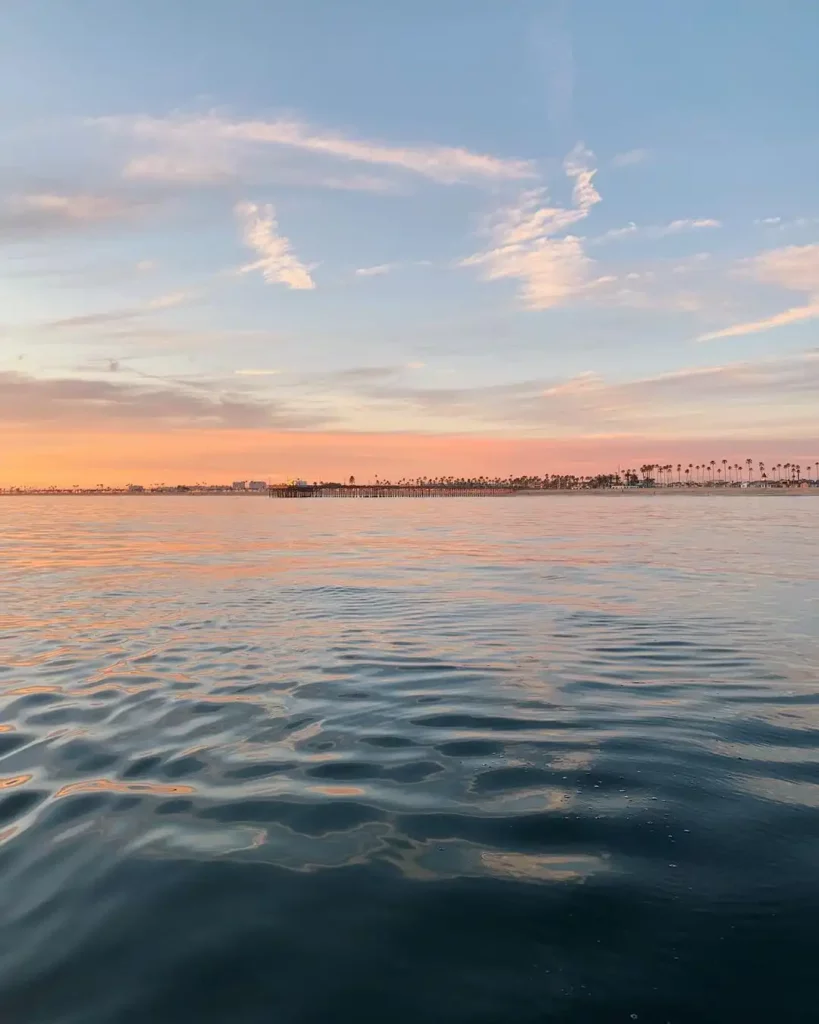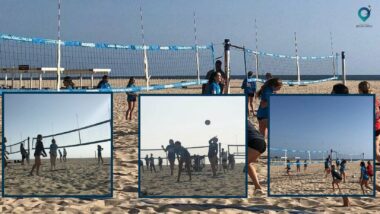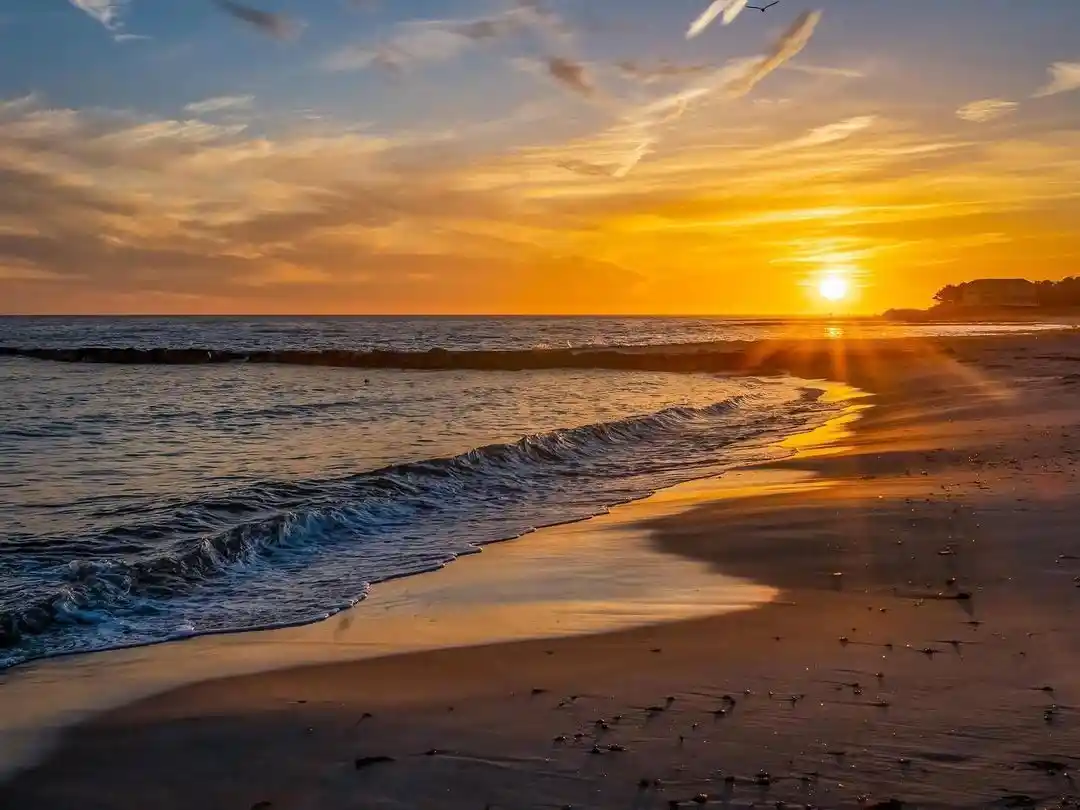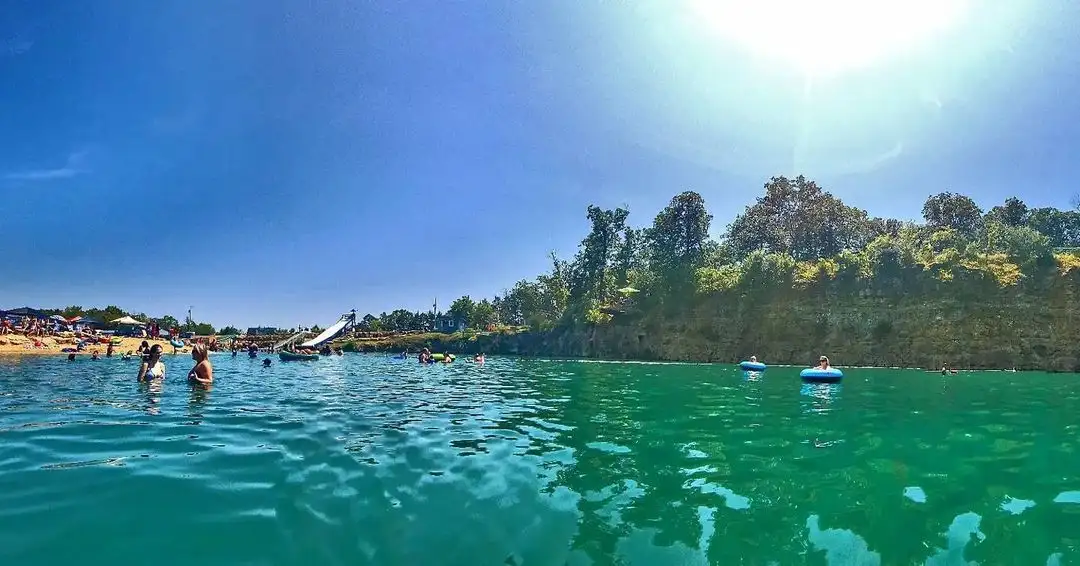Grunion Run: A Guide to the Best Beaches & Best Time.
In this guide, we’ll explore the enchanting world of Grunion Runs, from understanding what Grunion are to discovering the best beaches to witness this phenomenon. Whether you’re a nature enthusiast, an angler, or simply curious about the wonders of the coast, join us on a journey to uncover the magic of Grunion Runs along the picturesque California coastline.
What Is Grunion?
Grunion, scientifically known as Leuresthes tenuis, is a small, silvery fish species that inhabit the coastal waters of Southern California and the Baja California Peninsula in Mexico. They are a unique and intriguing species known for their distinctive physical characteristics and extraordinary reproductive behavior. Here’s a detailed look at what Grunion are:
Physical Characteristics: Grunion are easily recognizable due to their slender, elongated bodies and their silvery scales. These fish typically grow to be about 5 to 6 inches (13 to 15 centimeters) in length. Some key physical features of Grunion include:
A streamlined body shape: Grunion have a slender and cylindrical body, which helps them navigate through the waves and surf zones of sandy beaches during their reproductive events.
Silver coloration: Their silvery scales serve as a form of camouflage and reflect light, making them less visible to predators.
Habitat: Grunion are primarily found in the coastal waters of the eastern Pacific Ocean, specifically along the southern coast of California and northern Baja California. They prefer shallow sandy beaches and surf zones for their unique reproductive activities.
Reproductive Behavior: One of the most remarkable aspects of Grunion is their distinctive reproductive behavior, often referred to as “Grunion runs.” During specific times of the year, typically in the spring and summer months, Grunion embark on nocturnal journeys to the beach to lay their eggs. Some key points about their reproductive behavior include:
Synchronized spawning: Grunion runs are characterized by the synchronized arrival of adult Grunion on the beach to deposit their eggs in the sand during very high tides.
Egg burial: Female Grunion lay their eggs in the sand by partially burying them during the run. The eggs remain buried until the next high tide, when they hatch.
Tide-dependent: Grunion runs are closely tied to the tides, and they occur during specific tidal phases, primarily around the full and new moons. The high tides allow Grunion to come ashore and complete their reproductive cycle.
Ecological Significance: Grunion plays a vital role in the coastal ecosystem. They are a source of food for various predators, including seabirds, shorebirds, and larger fish species. The eggs they bury in the sand contribute nutrients to the coastal environment, supporting the food chain and ecosystem health.
Grunion are unique, small, silvery fish that are known for their slender appearance and remarkable reproductive behavior. Their synchronized spawning events, known as Grunion runs, are a natural spectacle that draws the interest of nature enthusiasts, researchers, and beachgoers along the California coast. Understanding the biology and behavior of Grunion is crucial for appreciating and preserving this fascinating species and its ecological significance.
Why Grunion Runs Are Unique
Grunion runs are unique for a number of reasons:
- Grunion are the only fish in the world that spawn entirely out of water. Other fish species may lay their eggs in shallow water or on plants above the water, but only grunion jump onto land to spawn.
- Grunion spawn on the beach during the highest tides. This unique reproductive behavior is thought to be an adaptation to avoid predators and to ensure that their eggs are deposited in moist sand.
- Grunion eggs hatch very quickly, in less than one minute. This rapid hatching is essential, as the eggs are exposed to the air and sun during low tide.
- Grunion run only on the night of the full and new moons. This is thought to be related to the tidal patterns, which are most extreme during the spring tides that occur during the full and new moons.
In addition to these unique biological characteristics, grunion runs are also unique because they occur in a very limited geographic area. Grunion are only found off the coast of Southern California and Northern Baja California, Mexico. This makes the grunion run a truly unique and special event.
Here are some specific examples of how the grunion run is unique:
- Grunion are the only fish in the world that have specialized scales to help them grip the sand. This allows them to swim up the beach and burrow into the sand to spawn.
- Grunion eggs have a special adhesive coating that helps them to stick to the sand grains. This prevents the eggs from being washed away by the waves.
- Grunion embryos have a special membrane that protects them from drying out. This allows the embryos to survive even when the sand is exposed to the air during low tide.
The grunion run is a truly unique and fascinating natural phenomenon. It is a testament to the adaptability and diversity of life on Earth.
The Phenomenon of Grunion Runs
The phenomenon of grunion runs is a truly unique and fascinating sight to behold. These small, silvery fish come ashore to spawn on the beaches of Southern California and Northern Baja California, Mexico, only on the nights of the full and new moons.
The grunion run is thought to have evolved as a way to avoid predators. By spawning on the beach at night, the grunion are less likely to be eaten by fish, birds, and other marine animals. Additionally, the grunion eggs are buried in the sand during spawning, which further protects them from predators.
The grunion run is also a response to the tidal patterns in the region. The highest tides occur during the full and new moons, which gives the grunion the best chance of getting their eggs up onto the beach and buried in the sand before the tide goes out.
The grunion run is a complex and well-coordinated event. The fish arrive at the beach in large numbers, and they all seem to know exactly what to do. The females swim up onto the beach and burrow into the sand with their tails. The males then follow the females and wrap their bodies around them to fertilize the eggs.
The waves then wash the eggs back into the ocean, where they incubate in the sand for about two weeks. When the eggs hatch, the baby grunion swim out to sea.
The grunion run is a vital part of the marine ecosystem in Southern California and Northern Baja California. The grunion are a food source for many marine animals, and they also help to keep the beaches clean.
Best Beaches for Grunion Runs
| Region | Beach | Address |
| San Diego | Seaward Avenue Beach | 5100 Seaward Ave, Carlsbad, CA 92008 |
| San Diego | West Beach of Santa Barbara | 600 Cabrillo Blvd, Santa Barbara, CA 93101 |
| Santa Barbara | Goleta Beach Park | 5677 Sandspit Rd, Goleta, CA 93117 |
| San Luis Obispo | Pismo Pier | 1200 Cypress St, Pismo Beach, CA 93449 |
| San Luis Obispo | Olde Port Beach | Morro Bay, CA 93442 |
| San Luis Obispo | Morro Strand State Beach | 1001 Morro Strand Blvd, Cayucos, CA 93455 |
| San Luis Obispo | Morro Strand State Beach (North Side) | 1001 Morro Strand Blvd, Cayucos, CA 93455 |
| San Luis Obispo | Cayucos State Beach | 1 Cayucos Dr, Cayucos, CA 93455 |
| Imperial | Imperial City Beach | 200 N Imperial Ave, Imperial Beach, CA 91932 |
| San Diego | Coronado Shores Beach | 6500 Ocean Blvd, San Diego, CA 92119 |
| San Diego | Coronado Beach | 000 Ocean Blvd, Coronado, CA 92118 |
| Oceanside | Ocean City Beach | 1010 N Pacific St, Oceanside, CA 92054 |
| San Diego | Mission Beach | 400 Mission Blvd, San Diego, CA 92109 |
| San Diego | La Jolla Shores | 8200 Torrey Pines Rd, La Jolla, CA 92037 |
| San Diego | Del Mar City Beach | 1100 Camino Del Mar, Del Mar, CA 92014 |
| Oceanside | Oceanside Pier View North Beach | 1600 S Coast Hwy, Oceanside, CA 92054 |
| Oceanside | Oceanside Harbor Beach | 1900 N Pacific St, Oceanside, CA 92054 |
| San Clemente | San Clemente Pier City Beach | 600 W Avenida Pico, San Clemente, CA 92672 |
| Dana Point | Doheny State Beach (North Side) | 25300 Dana Point Harbor Dr, Dana Point, CA 92629 |
| Newport Beach | Newport Municipal Beach | 20th St, Newport Beach, CA 92663 |
| Corona del Mar | Corona Del Mar State Beach | 3001 Pacific Coast Hwy, Newport Beach, CA 92625 |
| Huntington Beach | Bolsa Chica State Beach | 17851 Pacific Coast Hwy, Huntington Beach, CA 92647 |
| Seal Beach | Seal Beach | Seal Beach, CA 90740 |
| Long Beach | Belmont Shore Beach | 5301 Ocean Blvd, Long Beach, CA 90803 |
| Long Beach | Long Beach City Beach | 300 E Ocean Blvd, Long Beach, CA |
Grunion Run Schedule 2023-24
Grunion Run schedule
| Day | Date | Time |
| Tu | 3/7 | 9:40 p.m. – 11:40 p.m. |
| We | 3/8 | 10:00 p.m. – 12:00 a.m. |
| Th | 3/9 | 10:20 p.m. – 12:20 a.m. |
| Fr | 3/10 | 10:45 p.m. – 12:45 a.m. |
| Tu | 3/21 | 10:15 p.m. – 12:15 a.m. |
| We | 3/22 | 10:45 p.m. – 12:45 a.m. |
| Th | 3/23 | 11:15 p.m. – 1:15 a.m. |
| Fr | 3/24 | 11:50 p.m. – 1:50 a.m. |
| Mo | 7/3 | 9:40 p.m. – 11:40 p.m. |
| Tu | 7/4 | 10:30 p.m. – 12:30 a.m. |
| We | 7/5 | 11:15 p.m. – 1:15 a.m. |
| Th | 7/6 | 12:10 a.m. – 2:10 a.m.* |
| Mo | 7/17 | 9:35 p.m. – 11:30 p.m. |
| Tu | 7/18 | 10:10 p.m. – 12:10 a.m. |
| We | 7/19 | 10:40 p.m. – 12:40 a.m. |
| Th | 7/20 | 11:15 p.m. – 1:15 a.m. |
| Tu | 8/1 | 9:35 p.m. – 11:35 p.m. |
| We | 8/2 | 10:20 p.m. – 12:20 a.m. |
| Th | 8/3 | 11:10 p.m. – 1:10 a.m. |
| Fr | 8/4 | Midnight – 2:00 a.m.* |
| We | 8/16 | 9:55 p.m. – 11:55 p.m. |
| Th | 8/17 | 10:25 p.m. – 12:25 a.m. |
| Fr | 8/18 | 10:55 p.m. – 12:55 a.m. |
| Sa | 8/19 | 11:30 p.m. – 1:30 a.m. |
Official Source: California Department of Fish & Wildlife
The Grunion Run schedule for the closed season (observation only)
| Day | Date | Time |
| Th | 4/6 | 10:10 p.m. – 12:10 a.m. |
| Fr | 4/7 | 10:35 p.m. – 12:35 a.m. |
| Sa | 4/8 | 11:05 p.m. – 1:05 a.m. |
| Su | 4/9 | 11:40 p.m. – 1:40 a.m. |
| Th | 4/20 | 10:05 p.m. – 12:05 a.m. |
| Fr | 4/21 | 10:35 p.m. – 12:35 a.m. |
| Sa | 4/22 | 11:05 p.m. – 1:05 a.m. |
| Su | 4/23 | 11:40 p.m. – 1:40 a.m. |
| Fr | 5/5 | 9:30 p.m. – 11:30 p.m. |
| Sa | 5/6 | 10:05 p.m. – 12:05 a.m. |
| Su | 5/7 | 10:40 p.m. – 12:40 a.m. |
| Mo | 5/8 | 11:20 p.m. – 1:20 a.m. |
| Fr | 5/19 | 9:30 p.m. – 11:30 p.m. |
| Sa | 5/20 | 10:00 p.m. – Midnight |
| Su | 5/21 | 10:35 p.m. – 12:35 a.m. |
| Mo | 5/22 | 11:10 p.m. – 1:10 a.m. |
| Su | 6/4 | 9:45 p.m. – 11:45 p.m. |
| Mo | 6/5 | 10:30 p.m. – 12:30 a.m. |
| Tu | 6/6 | 11:20 p.m. – 1:20 a.m. |
| We | 6/7 | 12:15 a.m. – 2:15 a.m.* |
| Su | 6/18 | 9:45 p.m. – 11:45 p.m. |
| Mo | 6/19 | 10:20 p.m. – 12:20 a.m. |
| Tu | 6/20 | 10:55 p.m. – 12:55 a.m. |
| We | 6/21 | 11:35 p.m. – 1:35 a.m. |
Official Source: California Department of Fish & Wildlife
How to Participate in a Grunion Run
Participating in a Grunion Run can be an exciting and educational experience. These natural events offer a unique opportunity to witness the remarkable spawning behavior of Grunion, but it’s essential to do so responsibly and with respect for the environment. Here’s a step-by-step guide on how to participate in a Grunion Run:
- Check the Schedule: Research the Grunion Run schedule for the specific year you plan to participate. Grunion runs are tide-dependent and often coincide with full and new moons. Ensure you’re aware of the exact dates and times for your chosen location.
- Choose a Beach: Select one of the best Grunion Run beaches from the list provided earlier. Consider factors like accessibility, proximity, and local regulations.
- Time Your Arrival: Arrive at the chosen beach just before the expected high tide during the Grunion Run. This timing is crucial, as it’s when the Grunion ride the waves onto the beach to lay their eggs.
- Respect Wildlife and Regulations:
- When you arrive at the beach, remember that Grunion runs are a natural phenomenon, and it’s important to respect the environment and wildlife.
- Follow all local regulations and guidelines. For some Grunion Run locations, collecting Grunion or disturbing their nests may be prohibited.
- Keep Lights Low: Use minimal artificial lighting, such as flashlights or lanterns, as excessive light can disrupt the natural behavior of Grunion and disturb other beachgoers.
- Observe from a Distance: Find a comfortable spot on the beach, ideally above the high-tide line, and observe the Grunion from a respectful distance. Binoculars can be helpful for a closer look.
- Document Your Experience: If you’re interested in documenting the Grunion Run, use a camera or smartphone to capture photos or videos without disturbing the fish.
- Be Patient: Grunion runs can be unpredictable, and not every run results in a massive influx of fish. Be patient and enjoy the experience of being at the beach and observing the natural world.
- Leave No Trace: After the Grunion Run, make sure to clean up and leave the beach as pristine as you found it. Dispose of any trash properly.
- Learn and Share: Take the opportunity to learn more about Grunion and their unique life cycle. Share your experiences and knowledge with others to raise awareness about these remarkable events and the need for their conservation.
By following these steps, you can participate in a Grunion Run responsibly and gain a deeper understanding of this extraordinary natural phenomenon.
Impact of Grunion Runs on Surf and Shark Fishing
Grunion runs have a significant impact on surf and shark fishing in coastal areas where these natural phenomena occur. Understanding this impact is crucial for anglers who want to make the most of these unique events and the opportunities they present:
Increased Fishing Activity: Grunion runs attract a variety of fish species to the shoreline, particularly predatory species like sharks. During these runs, the feeding activity of sharks and other fish becomes more concentrated, leading to increased opportunities for anglers.
Targeting Predatory Species: Surf and shark anglers often focus their efforts on predatory fish, such as leopard sharks, smoothhounds, and bat rays, that are known to prey on Grunion during the runs. These runs create a unique scenario for targeting these species.
Timing is Crucial: The timing of surf and shark fishing during Grunion runs is critical. Anglers need to be on the beach just before high tide, as this is when predatory fish come closer to the shoreline to feed on Grunion.
Bait Choice: During Grunion runs, using Grunion as bait can be particularly effective for catching sharks and other predators. Freshly caught or imitation Grunion can entice these fish, mimicking their natural prey.
Variability in Success: The success of surf and shark fishing during Grunion runs can vary. Not every run result in a substantial influx of fish, so anglers should be patient and flexible in their approach.
Conservation Awareness: Responsible anglers are mindful of the conservation status of the species they target during Grunion runs. Some species may have regulations in place to protect their populations. It’s essential to follow these regulations and practice catch-and-release when necessary.
Ecosystem Health: Grunion runs and the corresponding surf and shark fishing activity contribute to the overall health of the coastal ecosystem. The transfer of nutrients from the ocean to the shoreline, facilitated by Grunion runs, benefits the food web and supports various species.
Education and Awareness: Grunion runs provide an excellent opportunity for anglers to learn about the natural cycles of marine life. Sharing knowledge about these events with fellow anglers and beachgoers can help raise awareness about the importance of conservation and responsible fishing practices.
Grunion runs have a substantial impact on surf and shark fishing along the California coast. These events create unique opportunities for anglers to target predatory fish and contribute to the health of the coastal ecosystem. It’s crucial for anglers to approach Grunion runs with respect for nature, adherence to regulations, and a commitment to sustainable fishing practices to ensure that these events continue to thrive and benefit the environment.
Best Times for Fishing during a Grunion Run
The best times to fish during a grunion run are:
Just before the grunion run starts: The predatory fish that feed on grunion, such as halibut, white seabass, and sharks, are often very active in the hours leading up to the grunion run. They are eager to feed on the grunion before they spawn and disappear back into the ocean.
During the grunion run: The grunion run itself can also be a good time to fish. The predatory fish are still very active, and they are easy to target because they are focused on feeding on the grunion.
Just after the grunion run ends: The predatory fish may continue to feed on the grunion eggs for a few hours after the grunion run has ended. This can be a good time to fish, especially if you are targeting fish that feed on the bottom of the ocean.
Tips for Fishing Big Bat Rays and Sharks during a Grunion Run
- Use heavy tackle. Big bat rays and sharks are large and powerful fish, so you will need to use heavy tackle to catch them. A 12–14-foot surf rod and a 6000-8000 series spinning reel or a conventional reel with 30-50 pounds of drag is a good starting point.
- Use live bait. Big bat rays and sharks are predators, so they are most attracted to live bait. Live grunion is a great bait to use during a grunion run. Other good baits include mackerel, bonito, and croaker.
- Fish in areas where the bat rays and sharks are feeding. You can find these areas by looking for bat rays and sharks swimming in the water or by looking for signs of their feeding activity, such as bait balls or birds circling overhead.
- Be patient. It may take some time for a big bat ray or shark to find your bait. Once they do find your bait, be prepared for a fight. These fish are strong and can put up a good battle.
Here are some additional tips:
- Use a wire leader to protect your line from the sharp teeth of bat rays and sharks.
- Fish during the low tide or high tide, when the bat rays and sharks are closer to shore.
- Fish at night, when bat rays and sharks are more active.
- Be aware of your surroundings and watch out for other anglers, especially when casting and reeling in your line.
Safety tips:
- Be careful when handling bat rays and sharks. They have sharp teeth and barbs that can cause serious injury.
- If you are not sure how to handle a bat ray or shark, ask for help from a more experienced angler.
- Follow all local fishing regulations.
Rules and Regulations for Grunion Run Fishing
Participating in Grunion Run fishing is not only an exciting activity but also one that requires adherence to specific rules and regulations to protect these unique marine creatures and their habitats. Here’s a comprehensive guide to the rules and regulations for Grunion Run fishing:
Check Local Regulations: Before engaging in Grunion Run fishing, it’s crucial to research and familiarize yourself with the specific regulations and guidelines established by local authorities and wildlife agencies. These regulations can vary from one location to another, so be sure to follow the rules applicable to your chosen beach.
Grunion Protection: Grunion are protected species during their runs. It is illegal to intentionally harm or disturb them or their nests. It is essential to observe and respect these fascinating creatures as they carry out their reproductive activities.
Respect Nesting Sites: Avoid walking or fishing on the areas of the beach where Grunion nests are present. These are typically marked off or indicated by conservation authorities. Protecting these nesting sites is crucial for the survival of Grunion.
Catch Limits: Some locations may have catch limits in place for certain fish species that are targeted during Grunion Runs. Be aware of these limits and adhere to them to ensure the sustainability of the fishery.
Size Restrictions: Be aware of size restrictions for fish species you may encounter during Grunion Runs. In some cases, undersized fish must be returned to the water to allow them to grow and reproduce.
Fishing License: a fishing license is generally required for anyone aged 16 and older participating in recreational fishing, including during Grunion Runs. Make sure you have a valid fishing license, and carry it with you while fishing.
Bag Limits: Bag limits are often established for specific fish species. These limits specify the maximum number of fish you are allowed to catch and keep during a single fishing trip. Know the bag limits for the species you intend to catch.
Catch-and-Release: Consider practicing catch-and-release for fish caught during a Grunion Run. Releasing fish unharmed ensures their survival and contributes to the overall health of the fishery.
Leave No Trace: Maintain a clean and responsible fishing environment. Dispose of trash and fishing waste properly, and ensure you leave the beach in the same condition you found it.
Safety and Respect: Always prioritize safety while fishing during a Grunion Run. Be respectful of fellow anglers and beachgoers, and use appropriate lighting and safety equipment if fishing at night.
Reporting Violations: If you observe any violations of fishing regulations or illegal activities during a Grunion Run, consider reporting them to the appropriate authorities or conservation organizations.
Adhering to these rules and regulations for Grunion Run fishing is not only a legal obligation but also a responsible and ethical practice. It ensures the protection of Grunion and the overall health of the coastal ecosystem while allowing you to enjoy this unique and fascinating natural phenomenon.
Fishing License Requirements for Catching Grunions
Fishing license requirements for catching Grunions can vary depending on the location and specific regulations of the state or region where you plan to participate in Grunion Run fishing. In the state of California, where Grunion Runs are a well-known phenomenon, fishing licenses are generally required. Here’s an overview of the fishing license requirements for catching Grunions in California:
Fishing License for Adults: In California, individuals aged 16 and older are typically required to have a valid fishing license when participating in recreational fishing, including Grunion Run fishing.
Fishing License Exemptions: Some exemptions may apply. For example, California residents who are 65 years of age or older are eligible for a reduced-fee or free fishing license. Additionally, certain designated free fishing days are offered each year, during which fishing licenses are not required.
Special Permits: In some cases, you may also need additional permits or validations for specific activities, such as fishing in marine protected areas or for specific fish species. Always check with the California Department of Fish and Wildlife (CDFW) or local authorities to determine if any special permits are required for the area where you plan to fish.
Youth Exemptions: Fishing licenses are not required for individuals under the age of 16. However, they must still follow all fishing regulations and may be subject to catch limits and size restrictions.
Online or In-Person Licensing: Fishing licenses can be obtained online through the California Department of Fish and Wildlife website or in person at various locations, including bait shops, sporting goods stores, and Department of Fish and Wildlife offices.
License Validity: Fishing licenses in California are typically valid for the calendar year (January 1 to December 31). However, there are also short-term licenses available for varying durations.
Keep License Handy: Once you have obtained your fishing license, be sure to carry it with you while fishing. It is your proof of authorization to engage in recreational fishing.
It’s essential to review the latest fishing regulations specific to the region where you plan to participate in Grunion Run fishing. Regulations, including license requirements, can change, so it’s wise to consult with the California Department of Fish and Wildlife or local authorities to ensure you have the most up-to-date information. By following the fishing license requirements and regulations, you can enjoy your Grunion Run fishing experience while respecting the laws designed to protect fish populations and the marine environment.
Fun Facts about Grunion Runs
Grunion runs are a fascinating natural phenomenon that offers plenty of intriguing facts and insights. Here are some fun and captivating facts about Grunion runs:
Moonlit Marathons: Grunion runs are synchronized with the lunar cycle, occurring during the highest tides that coincide with full and new moons. These celestial events guide the timing of Grunion runs.
High-Stakes Spawning: Grunion come ashore to lay their eggs in the sand during these runs, but they do so under the cover of darkness to minimize the risk of predation.
Precise Timing: The timing of Grunion runs is incredibly accurate. These fish can predict the exact minute when high tide will occur and coordinate their spawning accordingly.
Arribada” Behavior: Grunion runs are an example of an “arribada,” a term used to describe the synchronized mass nesting behavior of certain species. Arribadas are rare and are not limited to fish.
Mysterious Signals: While the exact cues that trigger Grunion runs are not fully understood, it is believed that a combination of lunar, tidal, and environmental factors plays a role in signaling these fish to come ashore.
Submerging Eggs: Female Grunion lay their eggs in the sand, burying them just below the surface. This unique adaptation ensures that the eggs are safely incubated until the next high tide triggers their hatching.
Quick Hatchlings: Grunion eggs are designed to hatch rapidly once they come into contact with seawater. This allows the young fry to be carried away by the tide and into the ocean.
Short Lifespan: Grunion have relatively short lifespans, usually living for only a few years. They complete their life cycle quickly, returning to the beach to spawn as soon as they reach maturity.
Nutrient Contribution: Grunion runs have ecological significance. The eggs they lay in the sand provide essential nutrients to the coastal environment, supporting the food web and ecosystem health.
Attracting Predators: – Grunion runs draw various predators to the shoreline, including seabirds, shorebirds, and larger fish species like sharks. It’s a feeding frenzy for these predators during Grunion runs.
Conservation Efforts: – Grunion are a protected species in some areas, and there are regulations in place to ensure their conservation. Some Grunion Run beaches may have restrictions on collecting or disturbing the fish.
Educational Opportunities: – Grunion runs provide valuable educational opportunities for researchers and nature enthusiasts. They offer insights into the remarkable adaptations of marine life to their coastal environments.
Spectator Events: – Grunion runs are not only of interest to scientists and anglers but also to beachgoers and tourists who gather to witness this natural spectacle along the California coast.
Ecological Balance: – Grunion runs play a role in maintaining the ecological balance of the coastal ecosystem by transferring nutrients from the ocean to the shoreline.
Grunion runs are not only a scientific marvel but also a captivating and unique event in the natural world. These fun facts help us appreciate the intricacies of this phenomenon and the importance of conserving these remarkable fish and their habitats.
Conclusion.
Grunion runs are a mesmerizing and captivating natural phenomenon that occur along the California coast, where thousands of Grunions ride the waves ashore to lay their eggs in the sand. These events are synchronized with the lunar cycle, taking place during high tides associated with full and new moons. Grunion runs are not only a spectacle to behold but also hold ecological significance, as they contribute essential nutrients to the coastal ecosystem.
For anglers, Grunion runs offer unique opportunities for surf and shark fishing, with predatory fish species coming closer to the shore to feed on Grunion during these events. However, it’s crucial to follow the rules and regulations in place to protect these fish and the marine environment.
Whether you’re a spectator, an angler, or a nature enthusiast, Grunion runs provide a chance to witness the marvels of nature and learn about the delicate balance of coastal ecosystems. With responsible practices, we can ensure the conservation and sustainability of Grunion and their habitats, allowing future generations to continue enjoying these extraordinary events.
Grunion runs are a reminder of the interconnectedness of the natural world, where the moon, tides, and marine life come together to create a truly remarkable and awe-inspiring spectacle along the California shoreline.
How much did you like Our detailed It’s Grunion Run Season! Things to Know Before You Go? Review Also, please share these Blogs with your friends on social media.
Recommended
Grunion Runs FAQs
When do Grunion runs take place?
Grunion runs occur primarily in the spring and summer months, with specific dates tied to the lunar calendar. They take place during the nights of the highest tides, often during full and new moons.
Where can I witness Grunion runs?
Grunion runs are common along the California coast. There are various beaches where you can witness these runs, such as Seaward Avenue Beach, Mission Beach, and many others listed in this article.
Do I need a fishing license for Grunion Run fishing?
In California, adults aged 16 and older typically need a valid fishing license for recreational fishing, including Grunion Run fishing. However, there are exemptions and reduced-fee licenses for certain groups.
What is the best time for fishing during a Grunion Run?
The best time for fishing during a Grunion Run is during the high tide associated with the run, which occurs during the full and new moons. Predatory fish are attracted to Grunion runs, making this the ideal time for surf and shark fishing.
Are Grunion protected during their runs?
Yes, Grunion are protected during their runs. It is illegal to intentionally harm or disturb them or their nests. Conservation efforts are in place to safeguard these fish.
Can I collect Grunion during a Grunion Run?
Regulations may vary by location, but in some areas, collecting Grunion during their runs is prohibited. Be sure to check local regulations before attempting to collect Grunion.
What bait is best for Grunion Run fishing?
Grunion are known to be attracted to various baits, including sand crabs, worms, and small fish. Using imitation Grunion can also be effective.
How do Grunion ensure the survival of their eggs in the sand?
Female Grunion bury their eggs just below the sand's surface, ensuring protection and incubation. These eggs are designed to hatch when exposed to seawater during the next high tide.
What is the significance of Grunion runs for the ecosystem?
Grunion runs contribute essential nutrients to the coastal ecosystem, supporting the food web and various species. They play a role in maintaining the ecological balance of the coastal environment.

Meet David Hoper, a passionate travel Blog writer with 7+ years of experience in travel content. Through his exemplary storytelling and engaging narratives, he shares his experiences and brings destinations to life. With a keen eye for detail and a love for exploration, he has cultivated a diverse portfolio of travel blogs that inspire and inform readers worldwide.
